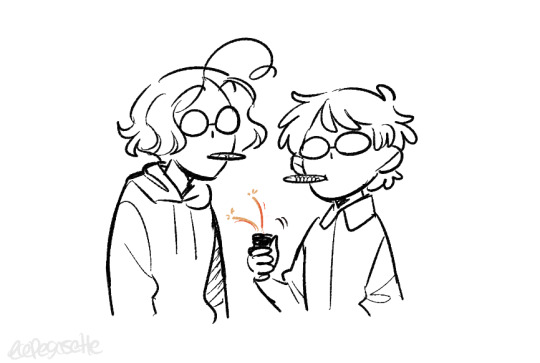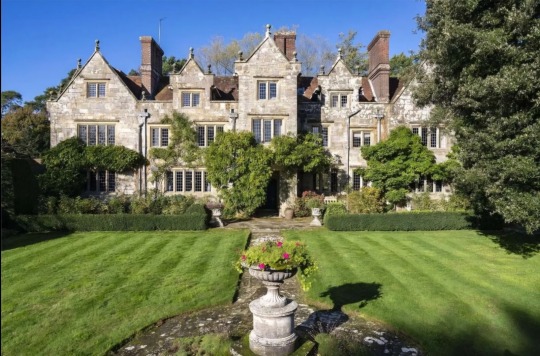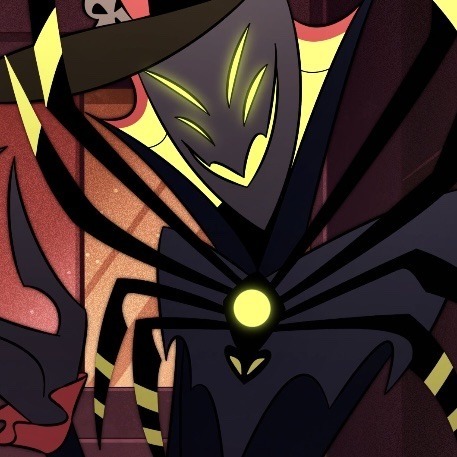#1600s britain
Explore tagged Tumblr posts
Text

Portrait of a couple, artist from the circle of William Larkin (fl. 1609-1619)
#William Larkin#mdp17th c.#couple#17th century#Britain#17th c. Britain#early 17th century#1600s#1610s
30 notes
·
View notes
Note
Can we get something with Canada and Uruguay? Heard they're similar in historical aspects


they'd be a funky duo
#context: uruguay often gets confused with argentina due to similar spanish and culture#there's even a gag about who invented the asado and other things lmao#uruguay's territory also was the subject of a custody battle in the 1600s century. passing from spain to portugal and vice-versa#it ultimately ended as a brazilian province in the 1800s and declared independence in the 1820s resulting in the cisplatina war#and then it was britain who granted them independence lmao#hetalia#hetalia world stars#my art#hetalia fanart#hetalia fan art#hws canada#hws uruguay#aph canada#aph uruguay#matthew williams#also yeah its zaza in the last pic
315 notes
·
View notes
Text

Sir Peter Lely (Dutch/active in England, 1618-1680) Portrait of Charles II, King of Great Britain and Ireland, n.d.
#Sir Peter Lely#dutch art#dutch#england#1600s#english king#king#Charles II#King Charles II#King of Great Britain#art#fine art#european art#classical art#europe#european#fine arts#oil painting#europa
21 notes
·
View notes
Text






Good Omens + Costumes
Aziraphale's silver, blue & golden doublet and pants in Season 01, Episode 03.
// requested by @foul-z-fowl
#Good Omens#Aziraphale#costumes#costume drama#costumesource#period drama#perioddramaedit#1600s#17th century#silver#gold#blue#London#England#Britain#Europe#requests
13 notes
·
View notes
Text
medieval monks and accountants start using Italian millione ("one thousand" + augmentative suffix) to mean 10^6 by the 1200s; this spreads to other languages
Jehan Adam coins bymillion and trimillion to mean 10^12 and 10^18 in 1475
Nicolas Chuquet extends this scale up to nonyllion (10^54), with every step being another six orders of magnitude (million, byllion, tryllion, quadrillion, quyllion, sixlion, septyllion, ottylion, nonyllion) in 1484. Note that in this period, it was common to put the digit separator every six digits instead of every three.
Guillaume Budé refers to 10^9 as milliart in 1516, in a Latin text
But in 1549, Jacques Pelletier du Mans uses milliard to mean 10^12, citing Budé as a source
In the 1600s, people start putting digit separators every three digits. But some scientists and mathematicians define the numerical scale according to how digits are grouped, rather than the actual order of magnitude: thus, one billion becomes 10^9, one trillion becomes 10^12, etc, creating the short scale.
"Milliard" is eventually added to the long scale, meaning 10^9 (in keeping with Budé's usage); the first published example is from 1676
By 1729, the short-scale meaning of "billion" (10^9) has already crept into American usage
This is in keeping with French usage at the time: in 1762, the Académie Française dictionary cites billion as meaning 10^9.
By the early 19th century, France has almost completely converted to the short scale, and U.S. usage follows France; the long scale is referred to in some sources as "obsolete." But Britain is still using the long scale (and I assume Germany and most other European countries)
Over the course of the 20th century, the long scale begins to become more influential in France, presumably due to the influence of continental usage; while the short scale becomes more influential in Britain, presumably due to the influence of American English. Notably the SI system very specifically uses unique prefixes that are the same across languages, to prevent confusion!
In 1961, the French Government confirms that they're going to officially use the long scale from now on; in 1974, Britain officially switches over to the short scale, and many other English-speaking countries follow.
In 1975, the terms "short scale" and "long scale" are actually coined, by mathematician Geneviève Guitel.
One reason large number names could be so unstable for so long is, of course, that outside specialized usage they are rare, and were even more rare before modern science and large modern monetary amounts became commonplace points of discussion. Wikipedia says "milliard" wasn't common in German until 1923, when bank notes had to be overstamped during Weimar-era hyperinflation.
As it currently stands, English, Indonesian, Hebrew, Russian, Turkish, and most varieties of Arabic use the short scale; continental Europe and most varieties of Spanish outside Europe use the long scale. A few countries use both, usually in different languages, like South African English (short scale) and Afrikaans (long scale) or Canadian English (short scale) and Canadian French (long scale) . Puerto Rico uses the short scale in economic and technical usage, but the long scale in publications aimed at export.
Notably some languages use neither, having their own names for large numbers--South Asian languages have the Indian numbering system, and Bhutan, Cambodia, and various East Asian languages also have their own numbering systems. Greek, exceptionally, uses a native calque of the short scale rather than a borrowing.
1K notes
·
View notes
Text
"A tweet would kill someone from the past" is NOT true because the intertwined religion and politics and monarchy in the 1600s in Britain was literally 100x more toxic than any social media fandom discourse. you think that you could kill a puritan with twitter? fools. it wouldn't even faze them and then they would tell you their thoughts on the divine right of kings and those would kill YOU
4K notes
·
View notes
Note
hello! I was wondering if you have read anything you might recommend in regard to burial practices, cemeteries, and such? or if there are any other users on here who write about biopolítics that might have knowledge. i always really enjoy your writing so thank you!
sure, this is literally a huge subfield lol so this list is just random crap i got something from at some point. i skipped all the brain death and ecmo type ontological debates because they frankly bore me.
Desiring the Dead: Necrophilia and Nineteenth-Century French Literature. Oxford: Legenda/European Humanities Research Centre (2003)
Sovereign Necropolis: The Politics of Death in Semi-Colonial Siam (2020, Trais Pearson)
Active Euthanasia in Pre-Modern Society, 1500–1800: Learned Debates and Popular Practices (2007, Michael Stolberg, Social History of Medicine 20, 205–221)
Erin-Marie Legacey, Making Space for the Dead: Catacombs, Cemeteries, and the Reimagining of Paris, 1780-1830, Ithaca: Cornell University Press, 2019.
The Body of Evidence: Corpses and Proofs in Early Modern European Medicine (2020, Francesco Paolo de Ceglia)
La «Mort de Vieillesse» dans les statistiques de mortalité (XVIIe siècle - XXIe siècle): une catégorie problématique (2018, Joël Coste, Micrologus: Nature, Sciences and Medieval Societies 26, 169-182)
Du tabac pour le mort: Une histoire de la réanimation (2018, Anton Serdeczny)
Death Is All around Us: Corpses, Chaos, and Public Health in Porfirian Mexico City (2019, Jonathan Michael Weber)
Entre paradis et enfer: mourir au Moyen Âge, 600–1600 (2010, Sophie Balace & Alexandra de Poorter)
Mummies, Cannibals, and Vampires: The History of Corpse Medicine from the Renaissance to the Victorians (2011, Richard Sugg)
History of Psychiatry 23, "Lunacy's Last Rites: Dying Insane in Britain, c. 1629–1939" (special issue)
Body Politics: The Criminal Body between Public and Private (2015, Nicholas Terpstra)
86 notes
·
View notes
Note
hi! i'm currently writing a piece about a historical alchemist trying (and failing) to turn mercury into gold. i'm very interested/excited abt the concept but my alchemical background is close to zero. are there any entry-level texts you'd recommend about the history of alchemy w a focus on the philosopher's stone? esp leading up to 1600-1700 great britain
Normally I don't like to answer world building questions like this, but you gave me a specific enough time frame for historical documents that I can recommend something:
You're looking for the Theatricum Chymicum. It's basically a historical survey of alchemy/chemistry up to the period.
Also like, just prepare that even an "easy" alchemical text will be difficult to read.
277 notes
·
View notes
Text

Willem Wissing (Dutch, active in Britain, 1656-1687) Mary of Modena, Queen consort to James II, ca.1685 Yale Center for British Art
#Willem Wissing#after peter lely#queen#Mary of Modena#Queen Mary#art#fine art#european art#classical art#female portrait#dutch#britain#1600s#europe#european#oil painting#fine arts#europa#island kingdom#england#painting#female#portrait#historical art#history#real people#western civilization#James ii#king James ii
67 notes
·
View notes
Note
hi i love your blog and the stuff you've shared has been really invaluable for me writing my dissertation right now! i was wondering if you've ever read anything interesting about police horses, or perhaps horses working for the state more generally? apologies if you've already made a post about this and i've missed it.
Nice. Don't know if your dissertation is specifically about horse histories; if so, then I'd imagine you already know much more than I do. So I don't know how much help I can be.
I've posted about the history of police horses in Australia before, which is just excerpts from Stephen Gapps and Mina Murray, in their "From colonial cavalry to mounted police: a short history of the Australian police horse" (The Conversation, 28 July 2021; "Horse Patrol" aka "Mounted Police" formally established 1825 after Wiradjuri war, used to round-up escaped laborers and attack Aboriginal communities as crucial force in colonial admin in 1830s culminating in Waterloo Creek Massacre.)
I've made some references to US participation in British campaigns of Boer War. (Apparently there was a micro-industry of the New Orleans port shipping 110,000 horses and 81,000 mules on 166 voyages via 65 British steamships for a cost of like hundreds of thousands USD per month for three years to help Britain.)
Similarly, Steve Hewitt and others write about Canadian mounted police and their role in national power in the Great Plains; twentieth-century counter-subversion; monitoring labor strikes and Indigenous/student dissent, etc.
"The Masculine Mountie: The Royal Canadian Mounted Police as a Male Institution, 1914-1939" (Hewitt, Journal of the Canadian Historical Association, 1996)
Riding to the Rescue: The Transformation of the RCMP in Alberta and Saskatchewan, 1914-1939 (Hewitt, 2006)
"Fashioning farmers: ideology, agricultural knowledge and the Manitoba farm movement, 1890-1925" (Hewitt, Journal of Canadian Studies, 1997)
"Canadianizing the West: The North-West Mounted Police as Agents of the National Policy, 1873-1905" (Mcleod, The Prairie West: Historical Readings, edited by Francis and Palmer, 1992)
---
Guessing you've already considered this, but a relevant thing I've read might be Breeds of Empire: The 'Invention' of the Horse in Southeast Asia and Southern Africa 1500-1950 (Greg Bankoff and Sandra Swart, 2007), about "the 'invention' of specific breeds of horse in the context of imperial design and colonial trade routes" and "the historiographical and methodological problems with writing a more species or horse-centric history." There was an earlier influential paper about imperial use of horses by Swart, ""The World the Horses Made": A South African Case Study of Writing Animals into Social History" (International Review of Social History 55:2, 2010).
Last year I read Bellweather Histories: Animals, Humans, and US Environments in Crisis (edited by Susan Nance and Jennifer Marks, 2023), and there was an interesting chapter on horses by Marks: "Chicago's 1872 Equine Influenza Epizootic and the Evolution of Urban Transit Technology."
---
Have you seen Jagjeet Lally's "Empires and Equines: The Horse in Art and Exchange in South Asia, ca. 1600-1850" (Comparative Studies of South Asia, Africa and the Middle East, 35:1, 2015)? It covers Mughal state power and aristocratic prestige as tied to horses, but also refers to the later utility of horseback mobility in East India Company and British power consolidation.
I used to be in a Central Asia-specific program-type thing and there was a long list of academic writing, most if it not in English, about horses as essential for statecraft in Mongol, Persian, Mughal, Chinese, and Ottoman contexts. So I know that there's a huge amount of writing on the subject, but I did not retain much of it. Jagjeet Lally's bibliography here is helpful. This also brings to mind Alan Mikhail's work The Animal in Ottoman Egypt (2013) and Under Osman's Tree: The Ottoman Empire, Egypt, and Environmental History (2017). Though horses aren't the main focus, they're essentially about "animal labor/capital."
---
I think I've seen that you've interacted with my old posts about Sujit Sivasundaram, Rohan Deb Roy, and Jonathan Saha on "interspecies empire"? Saha's most recent stuff includes writing in:
Biocultural Empire: New Histories of Imperial Lifeworlds (2024); Colonial Dimensions of the Global Wildlife Trade (2024); "A Historiography of Great Animal Massacres" (2024); "whiteness, masculinity, and ambivalent British Justice"; imperial use of elephants and "animal agency, undead capital, and imperial science" (2017); Subverting Empire: Deviance and Disorder in the British Colonial World (2015); imperial use of cattle and other livestock in "animals and the politics of colonial sensitibilites" (2015). Sivasundaram covers a lot of that (animality, criminality, imperial imaginaries) but also oceanic thinking.
---
Also thinking of:
The Horse in the City: Living Machines in the Nineteenth Century (Clay McShane and Joel A. Tarr, 2011)
And The Herds Shot Round the World: Native Breeds and the British Empire, 1800-1900 (Rebecca JH Woods, 2017). Though its not really about horses (mostly about sheep and cattle for dairy/meat).
---
But I know there are little niches:
(1) British frontier policing in Australia ("mounted patrols" in campaigns against Aboriginal peoples and keeping them on rangeland labor sites). (2) British metropolitan and urban settings (police horses in industrializing London, patrolling rural periphery during enclosure law era). (3) The settlement of the Great Plains of the US (especially origins of Rangers, the Fence Wars, and policing West Texas). (4) The Spanish colonization of Mexico and especially the Rio Grande Valley (horses in maintaining state power on the northern/desert frontiers; Spanish/Mexican states and Comanche/Apache mobility in southern Great Plains). (5) Argentina's state-building in the Chaco. (6) And then all of that material about Mughal, Mongol, Ottoman horses.
(Also, most recently, I did that annoying silly satirical retelling of horse-drawn sleighs as progenitor of vehicle and pedestrian laws in industrializing Amsterdam, and it alludes to how horse-drawn carriages were important affordances to wealthy aristocrats which shaped industrial urban space in Europe; I don't know much about it, but I know there's a fair amount of lit about both horses-as-vehicles and mounted police in early nineteenth-century Europe.)
Though I'm not really familiar with most of that. In trying to formulate thoughts about "carceral archipelagoes" and "frontiers," I've previously seen titles about the utility of telegraphs, railyards, and police for US power consolidation. But when horses/cattle get involved, I've been scared/disturbed by just how much of that literature seems to be directly produced by "police department museums," "police science" journals, or former police-superintendents-turned-pseudo-historians in their retirement years who study their own noble profession as a novel curiosity.
But I imagine you know better than me if this is true. So please put me back in my place if I've got the wrong impression!
It's my impression that, more recently, the advent of critical animal studies, multispecies ethnography, and critical geography has meant there's a lot of new stuff to check out.
#edited tag to add yea someone in rbs mentioned ann greenes Horses At Work Harnessing Power in Industrial America#horses a kinda unique case i think because while critical animal studies stuff on less charismatic creatures often explicitly is also about#colonial history the lit on horses is also flooded with like less rigorous stuff publicized by equestrians or ranching adjacent sponsors
71 notes
·
View notes
Text
Possington Manor - once the home of Camilla's great-grandmother.

#Possington Manor#The Weald#East Sussex#17th century#Jacobean#English mansions#Alice Keppel#Queen Camilla#English countryside#rural britain#country estate#1600's
107 notes
·
View notes
Text
Recently, I did a re-read of the AF series, and I am working through some thoughts I have on the Fowls and what allowed them to maintain power -- especially in the sense of being landed -- in Ireland after arriving during the Norman conquest in the 12th century.
Colfer establishes that Hugo de Folé and Virgil Butler arrived in Ireland during the first Norman crusades in the 12th century (1169).
“The first record of this unusual arrangement [between the Fowls and Butlers] was when Virgil Butler had been contracted as servant, bodyguard, and cook to Lord Hugo de Folé for one of the first great Norman crusades.” From: Artemis Fowl. By Eoin Colfer.
At once, these origins of the Fowls would make them ambiguously part of the Old English, a term from the modern period (post-1600) used to describe the descendants of the first Anglo-Norman conquerors who largely inhabited the Pale (Dublin and surrounding areas) and surrounding towns. Hugo de Folé and Virgil Butler would have likely been Catholic.
However, the origins of Fowl Manor complicate this.
The original Fowl castle had been built by Aodhán Fowl in the fifteenth century overlooking low-lying country on all sides. A tactic borrowed from the Normans. From: The Arctic Incident. By Eoin Colfer
In the 15th (c. 1401-1500) century, Aodhán Fowl acquired land for Fowl Manor in the Pale (Dublin and its surrounding areas); the estate has remained in the Fowls' possession ever since, which is important to note.
The Fowls' historical proximity to the Pale likely was what allowed them to maintain power over the centuries.
Between the 12th and 16th centuries, the Lordship of Ireland (1177-1542) placed swaths of Ireland under the control of Anglo-Norman lords loyal to the King of England.
However, by the 14th century (1300s), English rule of Ireland beyond the Pale (Dublin and its surrounding areas) was weakening. Beyond the Pale, (Catholic) Hiberno-Norman lords' fiefdoms had a degree of independence from the English, often adopting elements of Gaelic language and culture.
This changes around the 16th century with the Protestant Reformation and the Tudor conquest of Ireland. In 1536, Henry VIII of England decided to reconquer Ireland and bring it under crown control. Charles II, Henry VII's son, made the re-established Church of England even more explicitly Protestant.
Between the 16th and 17th centuries (c.1550s-1620s), Irish land was transferred to a new wave of (Protestant) settlers from Great Britain and Scotland to strengthen the Crown's weakening control over Ireland and Anglicize (and thus "civilize") the island; the land transfer was facilitated through the creation of plantations, such as the plantation of Ulster.
The Old English, which would have included descendants of de Folé and Virgil Butler, were supplanted by the New English, the Protestant landowners introduced by the Tudors in a number of ventures at plantations.
It is important to note the historical nuance that:
There was no equivalent in Ireland to the English Test Act of 1672, and there were plenty of precedents for exemptions to the Act of Supremacy. The legal position of Irish Catholics was, in many practical respects, better than that of English Catholics; many fines and penalties fell into abeyance under Charles [II], and the Catholic hierarchy co-operated openly with the Dublin administration. From James's [James VI and I] accession, the Church's position was obviously improved; priests emerged into the public eye and were allowed salaries, though they were not as yet endowed. Protestant superiority remained, in many areas, axiomatic; Catholics continued to occupy a curiously edgy position of formal inferiority combined with tacit toleration. But the ambiguities of their situation reflected the logic of local conditions just as much as the shifts in central policy. [...] But the 'Test clause in the 1704 [Popery] Act, obliging holders of public office to take sacraments according to the usage of the Church of Ireland, gradually excluded Presbyterians from town corporations even in Ulster. Despite the regium donum and the Toleration Act, their equivocal relationship with the civil power remained, and would provide a key theme in the radicalization of the Irish political world after 1780, when the threat of Catholic disaffection apparently receded. [From: Modern Ireland, 1600–1972. By R.F. Foster]
Still, the Popery Act would have had consequences for the historical Fowls and Butlers as Old English families. Beyond the Test clause in the Popery Act, it also limited Catholics' ability to buy/lease land, as well as limited inheritance from a Catholic to be by gavelkind i.e., divided equally, and thus shrinking with each generation, the estate between all sons, rather than according to Primogeniture.
It begs the question of how Fowl Manor remained in the hands of the family, rather than becoming the estate of a member of the New English.
As anti-Catholic sentiment was largely grounded in the political context of loyalty to the Crown (as opposed to the Pope), certain members of the Old English gentry could have (and did!) find ways to join the wave of the Protestant Ascendancy.
"The Anglo-Ireland of the day in fact encompassed sizable middle and lower classes -- a heterogeneity that Foster finds "exemplified by that quintessential Ascendancy institution, Trinity College: defined by Anglicanism but containing sons of peers, of shoemakers, of distillers, of butchers, of surgeons, and of builders" (Foster 1989, 173). And not all the "Anglo-Irish" were, strictly speaking, "Anglo." Early in Bowen's Court, Bowen's historical account of her family's Cork home, we learn that "Bowen" derives from the Welsh "ab Owen" or "ap Owen" (Bowen 1942a, 33). Other Anglo-Irish men and women traced their ancestry to the Old English and to Catholics who converted to Protestantism in order to reap the accompanying social, political and material rewards. Violet Martin (better known as Martin Ross) descended from the Old English Martins of Ross, who had owned land in Galway and had converted to Protestantism in the eighteenth century (McMahon 1968, 123). As Thomas Flanagan concludes, "there were many ways of being Anglo-Irish" (Flanagan 1966, 59). So what, then, defined Anglo-Irishness? In [R.F. ] Foster's view, it was Anglicanism. Anglicanism "defined a social elite, professional as well as landed, whose descent could be Norman, Old English, Cromwellian or even (in a very few cases) ancient Gaelic. Anglicanism conferred exclusivity, in Ireland as in contemporary England; and exclusivity defined the [Protestant] Ascendancy, not ethnic origin" From: An Anarchy in the Mind And in the Heart: Narrating Anglo-Ireland. By Ellen M. Wolff
And what do we find out in the first book of Artemis Fowl?
"Beside [Angeline] was a facsimile of [Artemis'] father, constructed from the morning suit he'd worn on that glorious day in Christchurch Cathedral fourteen years ago." From: Artemis Fowl. By Eoin Colfer
Christchurch Cathedral (in Dublin) is Anglican in denomination!
I just think it is so cool that across a few sentences from Artemis Fowl and The Arctic Incident, it is possible to situate the Fowl family within a semi-realistic history of Ireland.
#artemis fowl#long post#sources for this are largely rf foster's modern ireland 1600-1972#and ruth canning's The Old English in Early Modern Ireland#also I am not an expert when it comes to irish history! just an enthusiast/hobby researcher
95 notes
·
View notes
Text






Good Omens + Costumes
Crowley's black doublet and pants in Season 01, Episode 03.
// requested by @foul-z-fowl
#Good Omens#Crowley#period drama#perioddramaedit#costumes#costume drama#costumesource#Fantasy#1600s#17th century#black#London#England#Britain#Europe#requests
14 notes
·
View notes
Text
Overall, an estimated 60 to 89 million Amerindians died between 1500 and 1600, equivalent to about 15 percent of the world’s population. To fill that deep demographic void, the slave trade would carry some 11 million captive Africans across the Atlantic over the span of four centuries, repopulating much of the New World and producing steady profits for both slave traders and sugar planters. From 1500 to 1630, Iberian traders shipped an estimated 727,000 African slaves to Portuguese Brazil and Spanish America. When Dutch merchants also entered the trade, Africa’s slave exports rose rapidly to reach a total of 1.2 million for the seventeenth century. Once Britain’s dynamic merchant marine became involved as the next century began, the transatlantic traffic surged to 5.6 million slaves during the eighteenth century. Even after Britain banned the slave trade in 1807, another 3.4 million slaves still crossed the Atlantic, bound for the booming sugar and coffee plantations of Brazil and the Caribbean.
Alfred W. McCoy, To Govern the Globe: World Orders and Catastrophic Change
49 notes
·
View notes
Text
Zestial's Death Theory
Okay I was rewatching episode 3 cuz I love that episode, and I am still SO curious about Zestial. Mostly about his death. Because seriously, WHAT IS THIS???

BUT, here is a theory I have.
Zestial speaks in Shakespearean English, so he probably died in the 1500s or 1600s. He is a bat spider thing, and I think he also has aspects of a vampire, so he probably died when it was really dark at night. I don't think he was an actual vampire when he was alive, but vampires, I think, stem from the fear of rabies, so perhaps he got rabies and died from that. I'd say the plague as a secondary option, but I don't really think that.
I think we can find clues of what he was in his design.


He seems to have the outfit of what you'd think an upperclassmen at the time would wear (from what country? Idk. I assumed it was Romania or Britain). But, his hat seems a bit torn and ratty and reminds me a bit of a scarecrow, so perhaps he was a farmer when he was alive.
Why is he in Hell? Well, being a farmer, especially one who farms animals, gives you a lot of tools you'd use to kill. I think that he was a farmer by day, and by night, he was a murderer. Pretty good one too, being sneaky and always knowing how to avoid getting caught.
But, one day, a rabid bat bit him, and he contracted rabies. We all know what rabies does to a guy, right? So, at the beginning, he ended up becoming more and more sloppy with his murders, until he slowly became more and more deranged, and as his rabies got worse, so did his aggression. Instead of his calculated murders he was so used to, he would run up to people and bite them (on the neck?), like a rabid bat or a vampire.
There are 2 ways he could've died. The first one is that he died when he succumbed to the disease, and the second one is the people killed him out of fear. Either one could work, but if I think it's the second one, I like to believe that they put a stake through his heart. But man, him dying by himself in an empty field also sounds nice.
Anyways, do y'all have any theories about his death? I love talking about him.

398 notes
·
View notes
Photo

Trail of Tears: Memorial and Protest of the Cherokee Nation by John Ross
The Trail of Tears was the forced relocation of the "Five Civilized Tribes" – Cherokee, Chickasaw, Choctaw, Muscogee Creek, and Seminole – from their ancestral lands in the Southeastern region of the United States to "Indian Territory" (modern-day Oklahoma) between 1831 and 1850, resulting in the deaths of over 16,000 Native Americans and the removal of over 60,000 from their homelands.
Trail of Tears Memorial at New Echota
Christopher James Culberson (Public Domain)
Scholar John Ehle writes, "the Trail of Tears – or, as the Indians more often said, the Trail Where They Wept – was a trail of sickness" (385). Most Native Americans died of disease, exposure, exhaustion, and starvation on the forced marches from their lands east of the Mississippi River (modern-day Alabama, Florida, Georgia, North Carolina, and Tennessee) to Indian Territory, a distance of between 1000 miles (1600 km) and over 5000 miles (8000 km), depending on where a given march began and the route taken.
The Trail of Tears was not a singular event but a series of forced relocations following the passage of the Indian Removal Act of 1830. The marches began the following year with the Choctaw nation and proceeding through 1847, ending in 1850:
Choctaw: 1831-1836
Seminole: 1832-1842
Muscogee Creek: 1834-1837
Chickasaw: 1837-1847
Cherokee: 1836-1838
Precisely where the term "Trail of Tears" originated is debated, but it is usually attributed to a Choctaw chief who described the journey as "a trail of tears and death." Scholar Adele Nozedar comments:
The originator of this simple phrase is not known for sure, but it is believed to have been used by a Choctaw chief, Nitikechi, to describe the effects of the Indian Removal Act. The Cherokee had a similar term: "The Place Where They Cried."
(500)
Cherokee Chief John Ross (l. 1790-1866) famously opposed the removal in his Memorial and Protest of the Cherokee Nation sent to Congress in June 1836, arguing that the US government had no legal grounds for relocating his people. Although his piece focuses on the Cherokee nation, the points he makes apply equally to the others who were forcibly removed from their lands.
Although the Trail of Tears is the best-known act of forced relocation of Native Americans, it is far from the only one as citizens of many other nations of Native peoples of North America experienced the same throughout the 19th century and up to as recently as the mid-1960s to the 1970s. This event, and others like it, notably the Long Walk of the Navajo (1863-1866) are, generally, understood today as acts of genocide perpetrated by the US government.
Background to the Marches
Although the Indian Removal Act of 1830 was the immediate cause for the death marches known as the Trail of Tears, the policies informing that act date back to the 1630s, notably the Pequot War (1636-1638), which reduced the Pequot population of the region of modern-day Massachusetts from 3000 to 200 (many then sold into slavery) to open up their lands for English colonization. Among the "facts submitted to a candid world" presented by Thomas Jefferson in the Declaration of Independence of 1776 was that King George III of Great Britain (r. 1760-1820)
Has excited domestic insurrections amongst us and has endeavored to bring on the inhabitants of our frontiers the merciless Indian Savages, whose known rule of warfare is an undistinguished destruction of all ages, sexes, and conditions.
As president, in 1803, Jefferson advocated the forced removal of Native Americans west of the Mississippi River and, by 1819, citizens of Native American nations were offered 640 acres of land in Indian Territory for giving up their lands east of the Mississippi. The US government in 1819 had no authority to grant these acres to anyone, however, as they were in so-called "Indian Territory" and, as John Ross points out below, the US government had no legal right to forcibly remove Native Americans from their homelands for relocation in the west.
Westward Exploration and Settlement of the United States c.1850
Simeon Netchev (CC BY-NC-ND)
The solution to the "Indian Problem", included in the Indian Removal Act of 1830, was to buy the land from Native Americans, and then, having nowhere to live, they might be amenable to moving west on their own, which the US government promised to help them do. Although the cause of the Trail of Tears is often attributed to the Georgia Gold Rush of 1829, which brought miners into conflict with Native Americans living there, President Andrew Jackson already had Native American relocation as a priority when he took office that year.
Continue reading...
38 notes
·
View notes